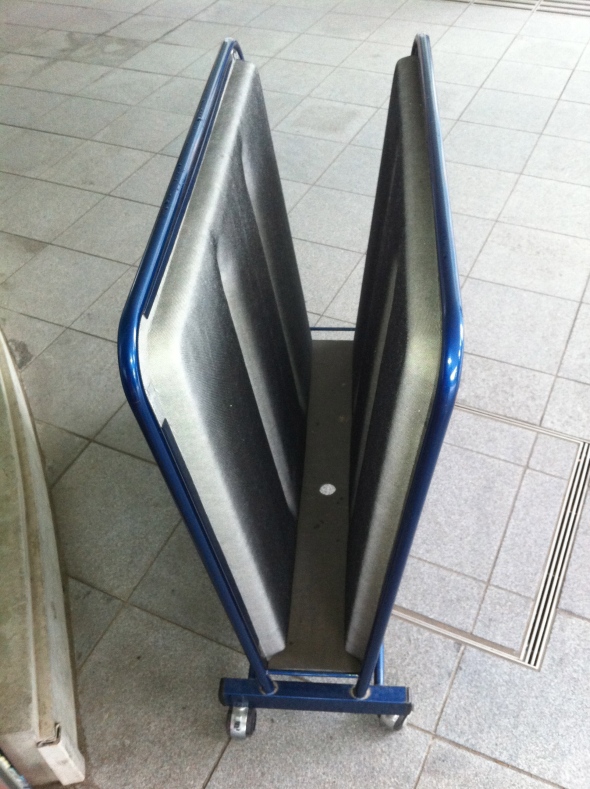Umbrella Musings
Posted: June 5, 2013 Filed under: Uncategorized | Tags: cool Japan, COOL TOKYO, NUNO, seasonal change, umbrellas Leave a comment One of the things I love most about Japan is the national enthusiasm for seasonal change. Here the shift from one sector of the year to the next is heralded with great fanfare. The arrival of ume plum blossoms at the tail end of winter, sakura cherry blossoms in mid-spring and, my personal favorite, ajisai hydrangea at the cusp of summer (right now!) are all causes for true celebration. Picking up where nature leaves off are the must-have household goods, like furin bells in summer and hokkairon hand warmers in winter. These items tend to be featured in shops at their appointed times of year only. Sure, some of the bruhaha is just crass commercialism. But behind that is a true love of the year’s cycle.
One of the things I love most about Japan is the national enthusiasm for seasonal change. Here the shift from one sector of the year to the next is heralded with great fanfare. The arrival of ume plum blossoms at the tail end of winter, sakura cherry blossoms in mid-spring and, my personal favorite, ajisai hydrangea at the cusp of summer (right now!) are all causes for true celebration. Picking up where nature leaves off are the must-have household goods, like furin bells in summer and hokkairon hand warmers in winter. These items tend to be featured in shops at their appointed times of year only. Sure, some of the bruhaha is just crass commercialism. But behind that is a true love of the year’s cycle.
One of my favorite trends is the spurt of interest in umbrellas that manifests itself every year at about this time. An interlude between spring’s freshness and summer’s full on heat and humidity, tsuyu, or rainy season, lasts for a couple of weeks and has a distinct character. Unlike the strong gusts and torrential downpours during the rest of the year, tsuyu rain has a delicacy all its own. During these few weeks it is likely to drizzle for part or most of the day but the drops are so gentle that sometimes they seem more like mist. Though the constant dampness can be a bit of a bother, I quite like tsuyu. It makes leaves and grass look greener, the sky look grayer and the air feel softer.
In anticipation of the rain, stores begin trotting out all kinds of specialized gear, such as waterproof hats, rubberized shoes and, of course, umbrellas. Equally suitable as sun shade and rain cover, the colorful brollies above are the products of NUNO, one of Japan’s finest textile design concerns. Made of cotton and linen, the individual fibers are waterproofed first at a factory in Yamanashi Prefecture and then woven together. Says NUNO’s Reiko Sudo, this process maintains the fabric’s breathability.
Complimenting the colorful cloth canopy, the structural components are the product of the Osaka umbrella maker Mikawa founded in 1883. The two companies have been collaborating since 2011. The umbrella handles come in two forms: the classic hook, made of either cherry or white birch, and the more wafu-inspired straight shape rendered in maple. All of the hardware is exquisitely detailed. Currently on sale at Matsuya Ginza, these umbrellas are made to last and be loved. By the way, Matsuya is also hosting a beautiful exhibit titled “Do You NUNO?” celebrating 30 years of the company’s textile greatness. The display will be up until June 10 and I highly recommend it.
Despite tsuyu’s predictability, I would venture to say that people in Japan have a bit of an aversion to getting wet. As soon as the sky begins to darken, out come the umbrellas. While working on my recent book, Made in Japan: 100 New Products, I learned that people here tend to own more umbrellas than in other parts of the world. No surprise.
To accommodate all of these umbrellas, Japan churns out a remarkable array of storage vessels and drying methods. As soon as the drops begin to fall, many shops roll out plastic sheath dispensers, enabling patrons to carry their wet umbrellas with them without making a mess. Since most people simply discard the used covers on their way out, this hardly seems like an ecological solution.
Another more appealing option is the umbrella dryer above. Basically, this is a V-shaped trough covered with water absorbing material of some sort.
One simply places the umbrella inside and twirls it around to shake off the droplets. Once dry, the umbrella is ready to be snapped closed and stored.



